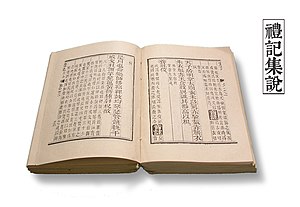User:Metlifebee/sandbox
This article needs additional citations for verification. (April 2012) |
A table of contents, usually headed simply "Contents" and abbreviated informally as TOC, is a list of the parts of a book or document organized in the order in which the parts appear. The contents usually includes the titles or descriptions of the first-level headers, such as chapter titles in longer works, and often includes second-level or section titles (A-heads) within the chapters as well, and occasionally even third-level titles (subsections or B-heads). The depth of detail in tables of contents depends on the length of the work, with longer works having less. Formal reports (ten or more pages and being too long to put into a memo or letter) also have a table of contents. Within an English-language book, the table of contents usually appears after the title page, copyright notices, and, in technical journals, the abstract; and before any lists of tables or figures, the foreword, and the preface.
Printed tables of contents indicate page numbers where each part starts, while digital ones offer links to go to each part. The format and location of the page numbers is a matter of style for the publisher. If the page numbers appear after the heading text, they might be preceded by characters called leaders, usually dots or periods, that run from the chapter or section titles on the opposite side of the page, or the page numbers might remain closer to the titles. In some cases, the page number appears before the text.
If a book or document contains chapters, articles, or stories by different authors, the author's name also usually appears in the table of contents.
In some cases, tables of contents contains a high quality description of the chapter's but usually first-level header's section content rather than subheadings.
Matter preceding the table of contents is generally not listed there. However, all pages except the outside cover are counted, and the table of contents is often numbered with a lowercase Roman numeral page number. Many popular word processors, such as Microsoft Word, WordPerfect, and StarWriter are capable of automatically generating a table of contents if the author of the text uses specific styles for chapter titles, headings, subheadings, etc.
There is one on this very page below.
Introduction[edit]
Example with leaders:
Introduction: My Thesis .. . . . . . . . . . . . . . 1 A thwarting opinion.... . . . . . . . . . . . . . 2 A general criticism ... . . . . . . . . . . . . . 3
Example with authors:
1. Introduction to Biology Arthur C. Smith 1 2. Microbiology Susan Jones 10 3. Advances in Biotechnology T.C. Chang 24
Example with text referencing:
Chapter 1 3
In which we first meet our hero and heroine, attend
a gala feast, and begin an unexpected journey.
Chapter 2 12
The journey takes an unusual turn, and new villains
are discovered.
References[edit]
- The Chicago Manual of Style (15th Edition)
- Gerald J. Alred, Charles T. Brusaw, Walter E. Oliu (2003). Handbook of Technical Writing. ISBN 0-312-30923-6.
{{cite book}}: CS1 maint: multiple names: authors list (link)
Notes[edit]
Category:Technical communication Category:Book design Category:Indexing
Within the Toolbox section on the left-hand side of every page is a link labeled "What links here". This is used to see a list of the pages that link to (or redirect to, or transclude) the current page. These are sometimes referred to as backlinks.
It is also possible to make a wikilink to the "What links here" list for a particular page; to do this type [[Special:WhatLinksHere/Page name]], replacing Page name with the title of the target page. (The same text – without the brackets – can also be entered in the search box, to access "What links here" for any page title.)
To use the tool, click Special:WhatLinksHere and type in the page title.
Redirects[edit]
The backlinks feature shows which backlinks are redirects. The backlinks of the redirect are also shown, and if they include a redirect, the backlinks of that also (not more). This makes it a useful tool for finding double redirects, which should generally be replaced by redirects to the final target. There are options to filter the backlinks table to hide redirects, or to show only redirects (by hiding links and transclusions).
Transclusions[edit]
The backlinks list includes transclusions of the current page.
It also includes links which exist on certain pages due to the transclusion of other pages (templates). For example, if page A contains a transclusion of template B, and B contains a link to C (not contained within <noinclude> tags), then the link to C will appear on page A, and A will be listed among the backlinks of C.
It is possible that pages may contain links to C as a result of the transclusion of a template even though the template does not itself contain such links (the links may be produced in the template wikitext by the application of various parser functions, rather than explicitly). In this case the template will not show up in the backlinks of C, although pages on which it is transcluded will (if they have the links to C). It may be convenient to make the template appear on the list by placing a link to C on the template, within <noinclude> tags.
--Metlifebee (talk) 06:10, 19 December 2013 (UTC)

